
With 240 hp, the Caterham Seven 485 is not the most powerful sports car tested at the Nürburgring by L’argus. But it is by far the lightest: 565 kg, half less than an Alpine A110 and four times less than an Audi RS6!
Test car: Caterham Seven Seven 485 R
|
From€ 64,674
€ 12,552 penalty
|
After 34 extreme tests since 2016, we were starting to get a little idea of the ideal technical sheet to face the most demanding circuit in the world. Firepower? Not necessarily, given the overconsumption of heavy Audi RS6 and BMW M5 tires. An avalanche of electric torque? Even less, given the lack of endurance of the Tesla Model 3 Performance and Porsche Taycan Turbo S in track use. In fact, as the Alpine A110 S, Mazda MX-5 2.0 or even Mégane RS Trophy-R have proven, the key to efficiency on this track (and many others) goes through another quality: lightness, ideal for shining the efficiency of the brakes or the accuracy of damping.
All that remained was to convene the most aerial of all, capable of passing the aforementioned devices for cruise ships: the Caterham Seven. Advertised at 565 kg, this ballerina weighs half the weight of an Alpine A110 S, the lightest ex-sportswoman in our saga. And since the long climbs of the Nürburgring still require a little power, we shunned the small Caterham 170 of 84 hp to retain its majesty 485, strong 240 hp (the versions of 135 hp, called 1600 and 275, have disappeared. ). The weight / power ratio then becomes more favorable than that of a Ferrari SF90 of 1000 hp, but the first meeting with this little Englishwoman almost made us regret our choice …
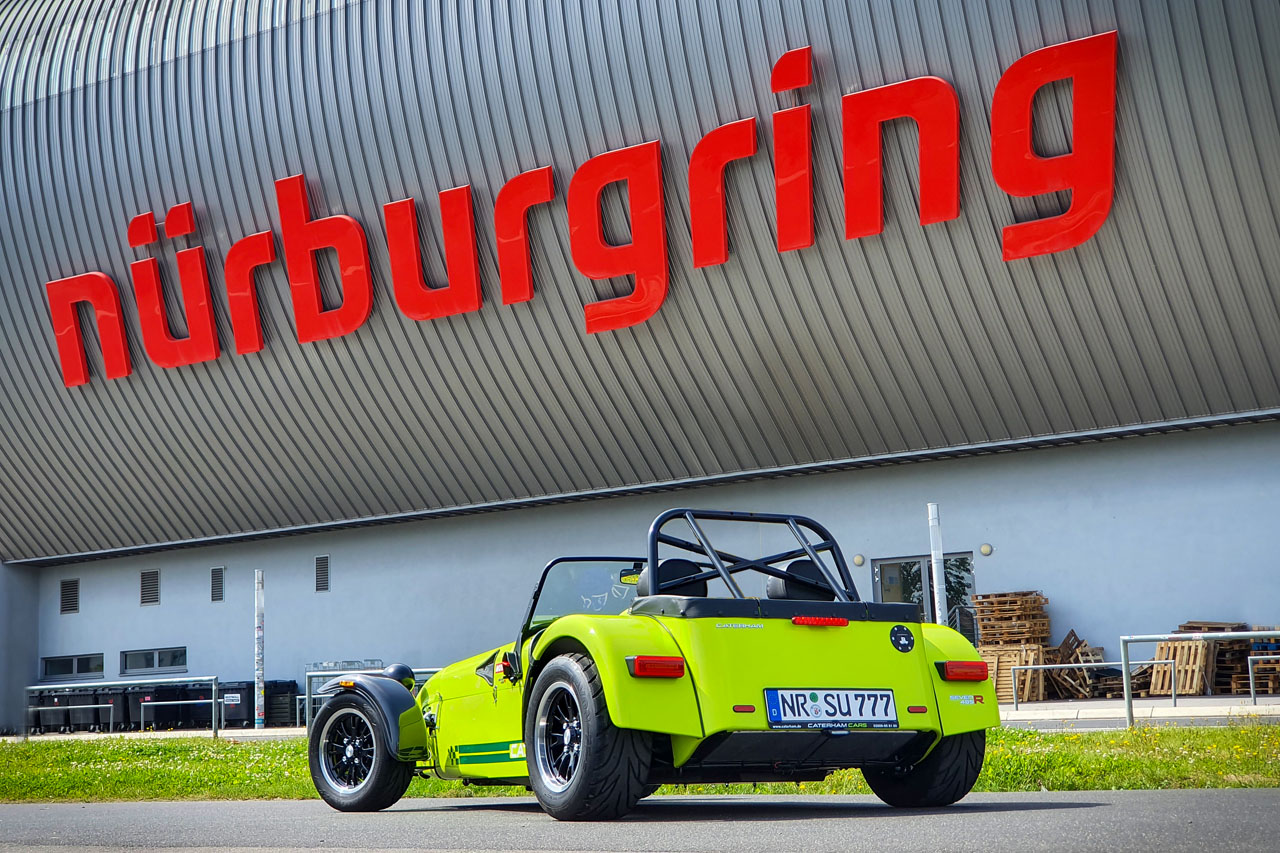
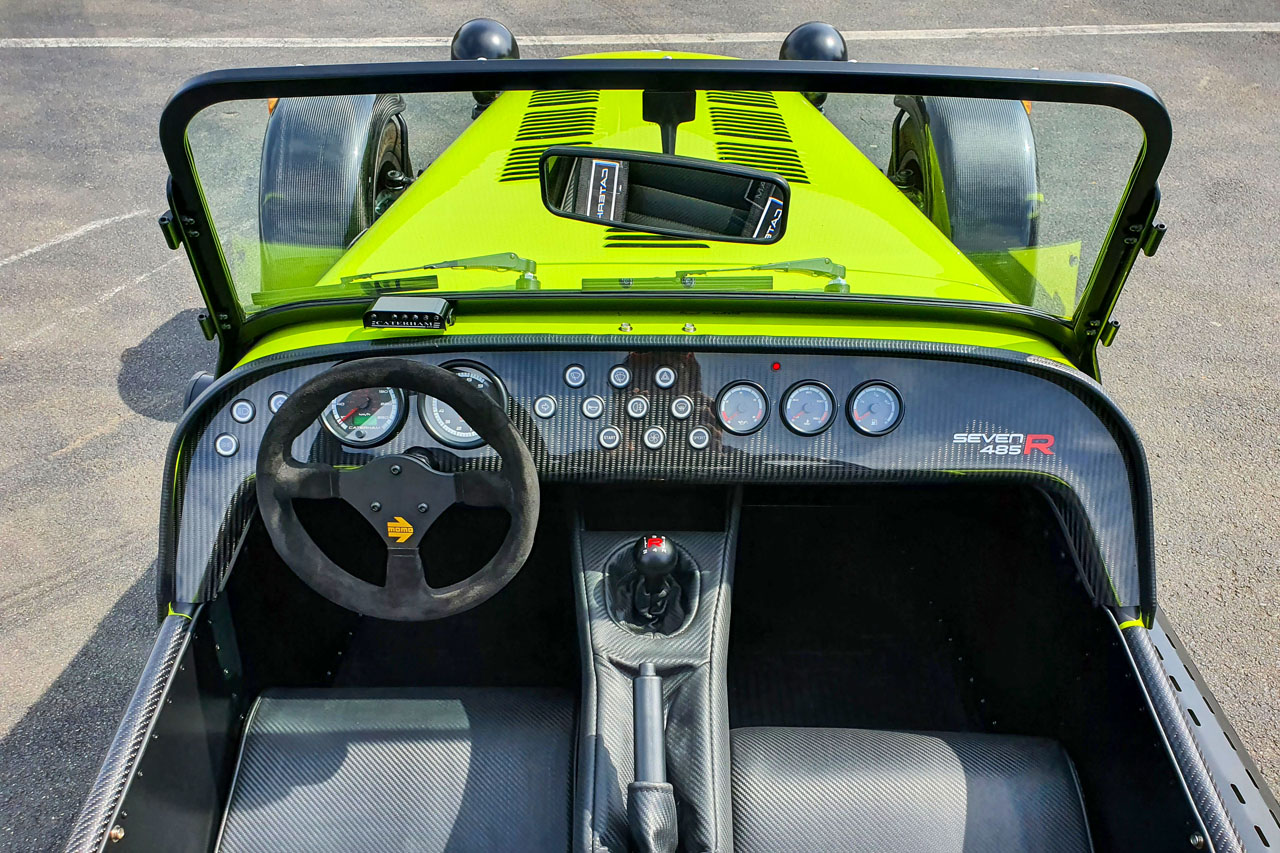
Our Caterham 485 R “acid green” indeed came in Standard and not Large version (S3 instead of SV, for faithful to the old appellations), 25 cm shorter and 11 cm narrower. Getting in there therefore generates as much fun as it does worry, in this cramped space where the side of the car literally presses on the ribs (side impact prohibited), where pressure on the brake also causes the accelerator to hang ( I should have driven in socks), and where it is obligatory to spread my arms to be able to steer… or counterbrake (not figured out how to disassemble my elbows). It is therefore a little intimidated that we embark on the most careful north loop tour in the history of our saga.
Engine: 18/20
Installed in the front center position, the engine of the Seven 485 is a Ford 2.0 Duratec, not supercharged. His time with the Caterham preparers transfigures him however since he spits 240 hp at 8,500 rpm, at a breath of maximum speed! To enjoy all the horsepower, you have to press the little Sport button on the dashboard, which summons the most aggressive engine mapping and seems to bypass a few baffles from the side exhaust. The character then becomes explosive.
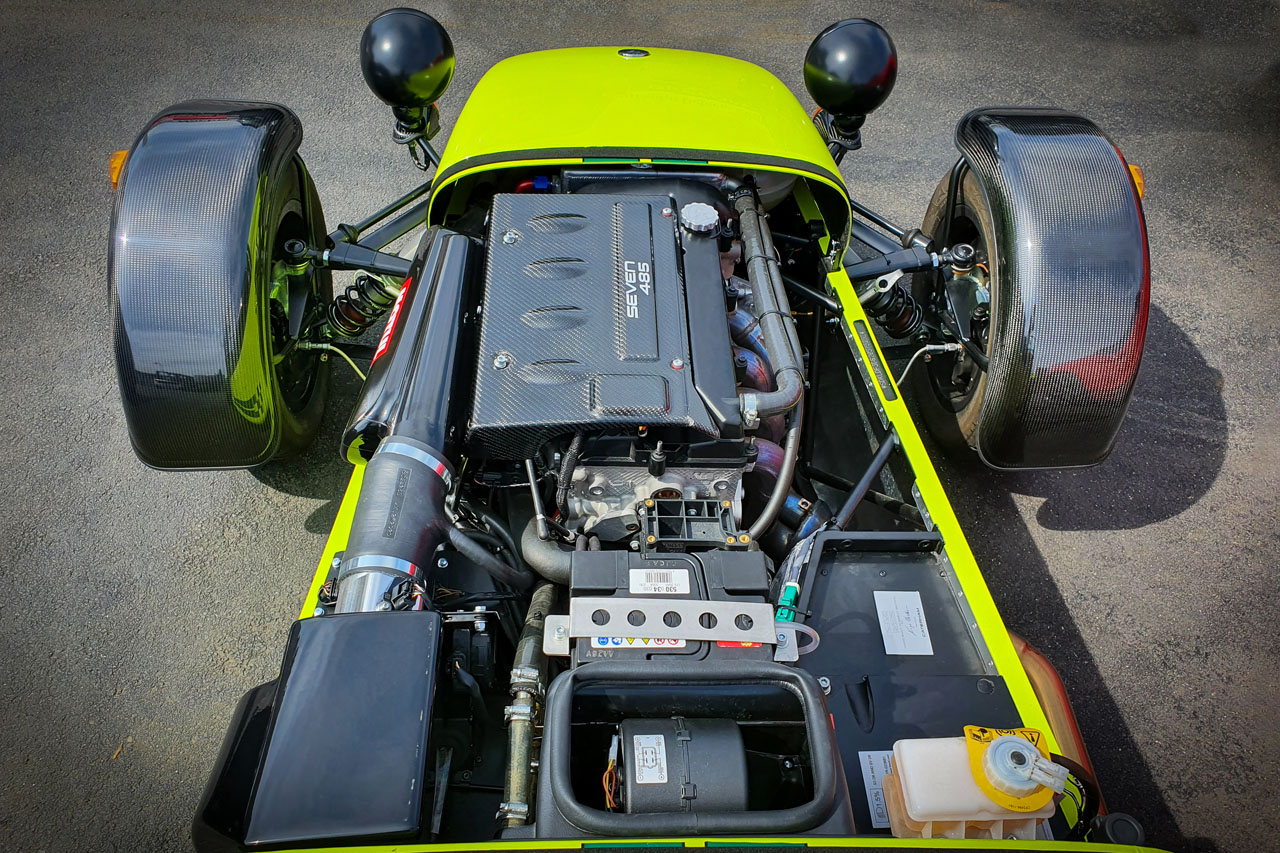
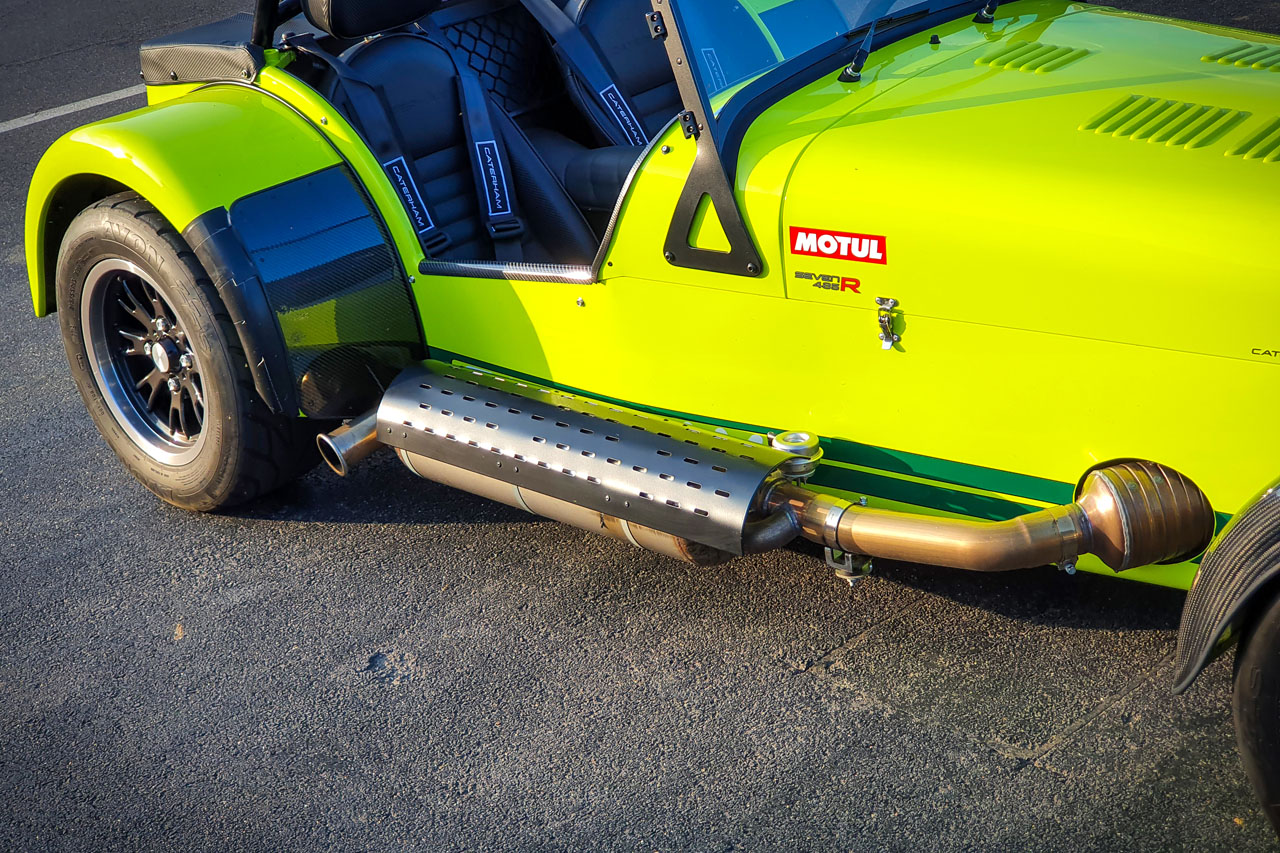
With a wise flexibility under 3000 rev / min, the English 2.0 gradually takes the trunk to transform after 5500 rev / min. He then seems to enter a sort of trance, sticking the needle towards the glove box (it is an image, there is none) and his passengers in the trunk (ditto or almost). The whole in a hoarse sound and interspersed, with the deceleration, of strong backlashes of the exhaust located within easy reach of the passenger. Guaranteed atmosphere!
If the 3.4 s announced from 0 to 100 km / h seem a bit optimistic, the thrust really impresses on the first reports before gradually easing. At high speed, in fact, the sensations come more from the generous eddies of air than from the revivals, less astounding on the upper gears. In question: the sloppy aerodynamics with the optional windshield and the staging of the recent five-speed manual gearbox.
Box: 15/20
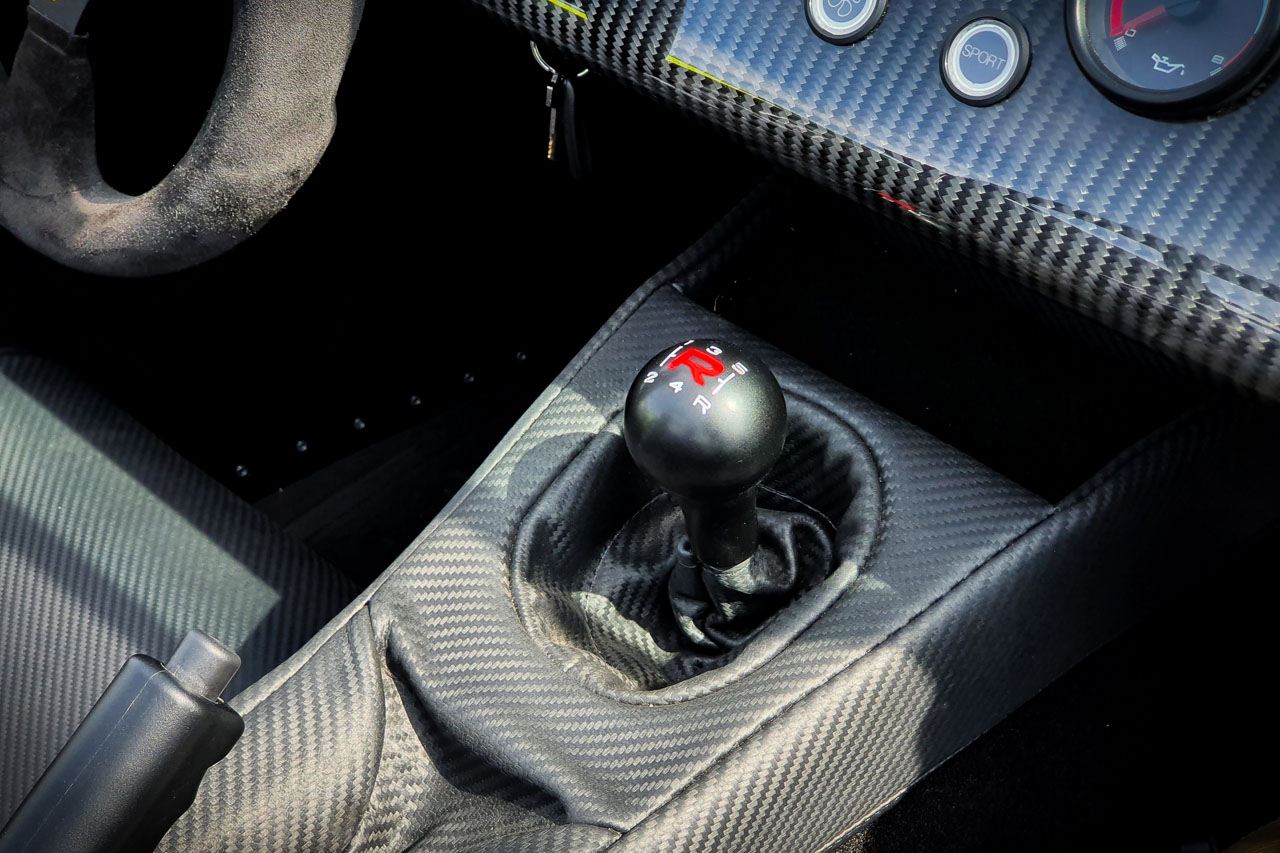
Until now, the Seven 485 was the only one to carry a “6” gearbox with very close ratios as standard (it was offered as an option on the less powerful versions). The changeover to Euro 6 standards coincided with the return to the “5” gearbox, generating greater drops in revs when changing up gears. Not optimal for this sharp engine giving the best of itself in the tops of the tachometer (maximum torque at 6,300 rpm).
But nothing to suffocate the guy, nor to alter the joy of rushing that love of the gear lever. Firm control, short deflections, virile locks, everything is there! To handle it, a simple movement of the wrist is enough, recalling the small toe offset sufficient to perform a heel-toe. Here again, it is better to afford narrow shoes to be sure not to make a bad manipulation ‘…
Chassis: 17/20
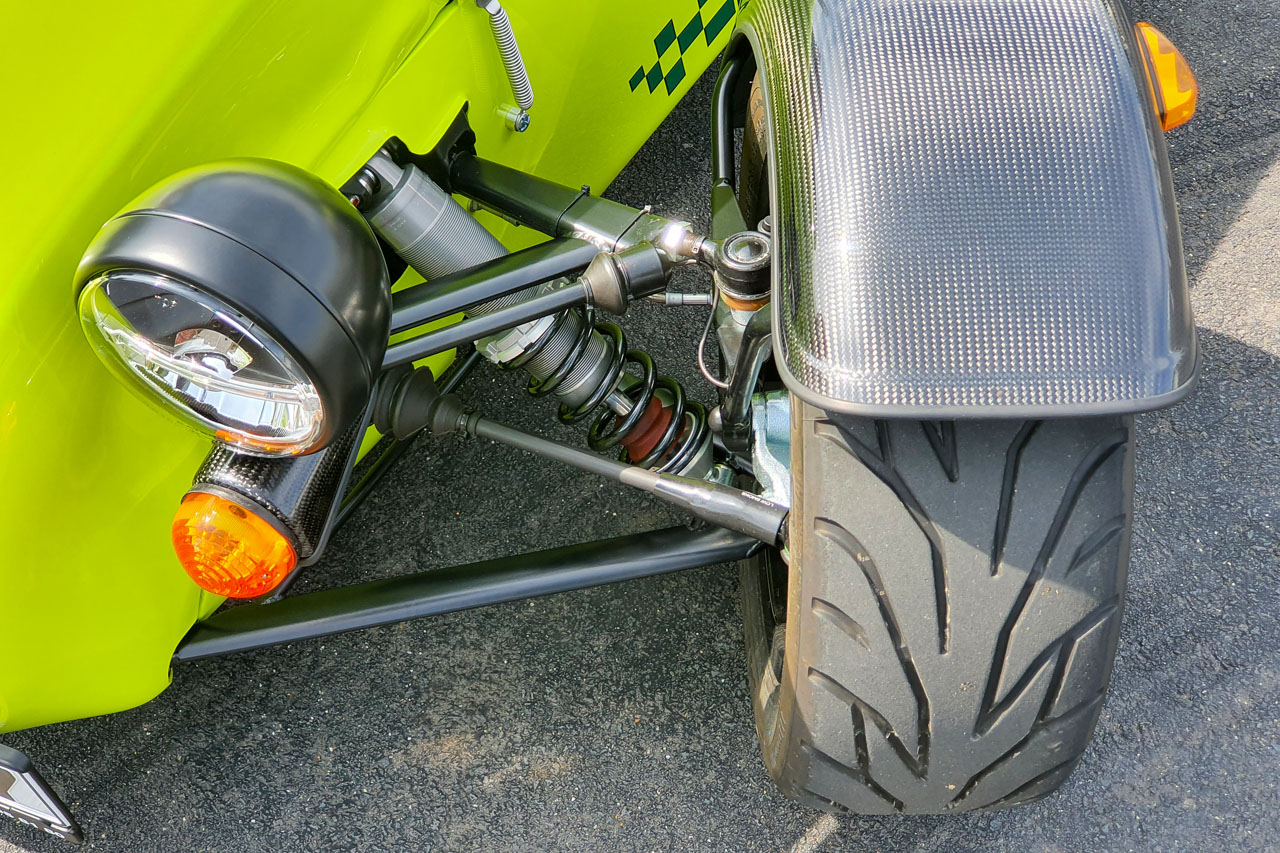
At Caterham, there are more chassis configurations than available powertrains. The recently tested small Seven 170 is based on a tubular chassis with triangulated front suspension and a rigid rear axle. The 485 prefers a De Dion bridge, recovers widened front tracks, adjustable springs and a self-locking differential. As for the R pack, dedicated to the track, it includes firmer adjustable shock absorbers and 13-inch wheels instead of 15. For the anecdote, a final CSR version reserves the exclusivity of a front suspension “inboard” (the combined springs / shock absorbers are positioned differently and covered by the body, which is not the case here) and a double wishbone rear suspension. But back to our narrow-frame 485 R, the most radical of all.
As mentioned in the introduction, our northern loop tour was quite wise, if not the wisest in the whole history of our extreme tests. The advantage, in Caterham, is that there is no need to force the tires, bring the shock absorbers to limit or abrupt the tiny steering wheel to feel authentic driving sensations. Unassisted, the steering transcribes the slightest micro-gravel of the roadway and is integral with the wheels, whose fenders in line of sight pivot at the same time as they. Unique!
The flexible suspension, made possible by the reduced weight, magically fly over the degraded runway by letting these same mudguards oscillate around the fuselage (unique again!). As for the balance, it combines a hyper reactive front end and a ticklish rear, ultra-efficient in the winding portions but which we did not lead to the limits in the curves approached beyond 140 km / h. Simple precautionary principle …
Braking: – / 20
Looking at the tiny discs not even filling the 13-inch wheels, one wonders if Caterham did not have the wrong part on the workbench during assembly. Then we follow the muscular slowdowns, and the doubt vanishes. What efficiency! Unassisted, braking (with four-piston fixed front calipers) requires a good impact on the pedal. But this feature ultimately facilitates dosing. We are however far from having been at the end of the system, the very close arrangement of the pedals does not really encourage to delay its braking points on this track completely deprived of loopholes. In the interest of honesty, we will therefore refrain from rating this chapter.
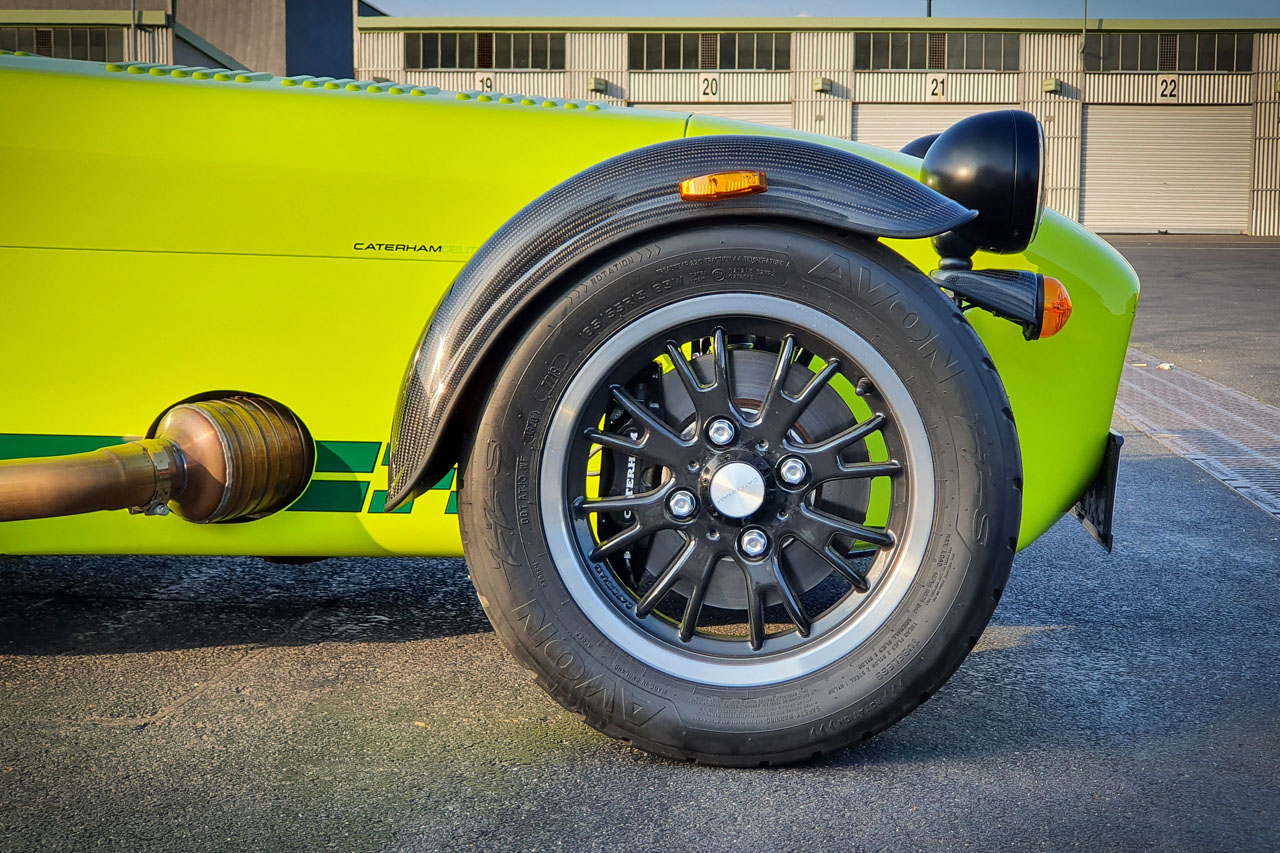

Find the test report, the technical sheet, as well as the prices, equipment and options of the Caterham 485 on the following page.
















